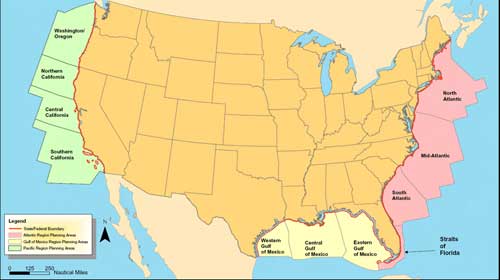 Regionally-tailored plan continues balanced approach to leasing, development; Draft proposal would protect sensitive resources—makes available nearly 80% of estimated undiscovered technically recoverable oil and gas resources on US Outer Continental Shelf
Regionally-tailored plan continues balanced approach to leasing, development; Draft proposal would protect sensitive resources—makes available nearly 80% of estimated undiscovered technically recoverable oil and gas resources on US Outer Continental Shelf
Map: US outer contintal shelf
As part of President Obama's all-of-the-above energy strategy to continue to expand safe and responsible domestic energy production, Secretary of the Interior Sally Jewell and Bureau of Ocean Energy Management (BOEM) Director Abigail Ross Hopper announces the next step in the development of the nation's Outer Continental Shelf (OCS) Oil and Gas Leasing Program for 2017-2022.
The Draft Proposed Program (DPP) includes 14 potential lease sales in eight planning areas – 10 sales in the Gulf of Mexico, three off the coast of Alaska, and one in a portion of the Mid- and South Atlantic.
"The safe and responsible development of our nation's domestic energy resources is a key part of the President's efforts to support American jobs and reduce our dependence on foreign oil," said Secretary Jewell. "This is a balanced proposal that would make available nearly 80 percent of the undiscovered technically recoverable resources, while protecting areas that are simply too special to develop."
Release of the draft is an early step in a multi-year process to develop a final offshore leasing program for 2017-2022. Before the program is finalized, the public will continue to have multiple opportunities to provide input. Today's draft proposal was informed by more than 500,000 comments from a wide variety of stakeholders and states.
"The draft proposal prioritizes development in the Gulf of Mexico, which is rich in resources and has well-established infrastructure to support offshore oil and gas programs," added Jewell. "We continue to consider oil and gas exploration in the Arctic and propose for further consideration a new area in the Atlantic Ocean, and we are committed to gathering the necessary science and information to develop resources the right way and in the right places. We look forward to continuing to hear from the public as we work to finalize the proposal."
The OCS Lands Act requires the Secretary of the Interior to prepare a five-year program that includes a schedule of potential oil and gas lease sales and indicates the size, timing and location of proposed leasing activity as determined to best meet national energy needs, while addressing a range of economic, environmental and social considerations.
BOEM currently manages about 6,000 active OCS leases, covering more than 32 million acres – the vast majority in the Gulf of Mexico. In 2013, OCS oil and gas leases accounted for about 18 percent of domestic oil production and 5 percent of domestic natural gas production. This production generates billions of dollars in revenue for state and local governments and the U.S. taxpayer, while supporting hundreds of thousands of jobs.
A REGIONALLY TAILORED APPROACH
The draft proposal reflects a continuation of the regionally tailored leasing strategies employed in the current 2012-2017 Program that are specific to each planning area. The options in the draft proposal involve sales in offshore areas that have the highest oil and gas resource potential, highest industry interest, or are off the coasts of states that expressed a strong interest in potential energy exploration, while still considering potential environmental impacts, stakeholder concerns, and competing uses of ocean and coastal areas.
Gulf of Mexico:
The draft proposal includes ten sales in the Gulf of Mexico, one of the most productive basins in the world and where oil and gas infrastructure is well established. The draft proposal includes a new approach to lease sales in the Gulf of Mexico by proposing two annual lease sales in the Western, Central, and the portion of the Eastern Gulf of Mexico that is not subject to Congressional moratoria. This shifts from the traditional approach of one sale in the Western and a separate sale in the Central Gulf each year.
"This new approach will allow for BOEM to more effectively balance the sales while providing greater flexibility to industry to invest in the Gulf, particularly given the significant energy reforms recently adopted by the Mexican government," said BOEM Director Hopper.
Alaska:
In Alaska, the draft proposal continues to take a careful approach by utilizing the targeted leasing strategy set forth in the current program, which recognizes the substantial environmental, social and ecological concerns in the Arctic. The draft proposal proposes one sale each in the Chukchi Sea, Beaufort Sea, and Cook Inlet areas.
Also today, President Obama – using his authorities under the OCS Lands Act – designated portions of the Beaufort and Chukchi Seas as off limits from consideration for future oil and gas leasing in order to protect areas of critical importance to subsistence use by Alaska Natives, as well as for their unique and sensitive environmental resources. In December, President Obama used this same authority to place the waters of Bristol Bay off limits to oil and gas development, protecting an area known for its world-class fisheries and stunning beauty.
"We know the Arctic is an incredibly unique environment, so we're continuing to take a balanced and careful approach to development," said Jewell. "At the same time, the President is taking thoughtful action to protect areas that are critical to the needs of Alaska Natives and wildlife."
Four of the five areas withdrawn today by President Obama were previously excluded from leasing in the current 2012-2017 oil and gas program; three of the five were also excluded by the prior Administration. Those areas include the Barrow and Kaktovik whaling areas in the Beaufort Sea, and a 25-mile coastal buffer and subsistence areas in the Chukchi Sea. The withdrawal also includes the biologically rich Hanna Shoal area in the Chukchi Sea, which has not previously been excluded from leasing. Extensive scientific research has found this area to be of critical importance to many marine species, including Pacific walruses and bearded seals.
The proposed Alaska sales would be scheduled late in the program to provide additional opportunity to gather and evaluate information regarding environmental issues, subsistence use needs, infrastructure capabilities, and results from any exploration activity associated with existing leases from previous sales.
Atlantic:
The draft proposal invites public comment on one potential lease sale late in the program for a portion of the Mid- and South Atlantic OCS, which includes areas offshore Virginia, North and South Carolina and Georgia.
"At this early stage in considering a lease sale in the Atlantic, we are looking to build up our understanding of resource potential, as well as risks to the environment and other uses," said Jewell.
The potential lease sale would require a 50-mile coastal buffer to minimize multiple use conflicts, such as those from Department of Defense and NASA activities, renewable energy activities, commercial and recreational fishing, critical habitat needs for wildlife and other environmental concerns.
The July 2014 Programmatic Environmental Impact Statement on Atlantic Geological and Geophysical activities furthered the Atlantic area strategy by establishing a path forward to update information on the region's offshore oil and gas resources, which is more than 30 years old. Today's proposal is in line with comments received from adjacent states and reflects the Administration's thoughtful approach to potential lease sales in new areas, pending further public review and comment.
Pacific:
Areas off the Pacific coast are not included in this draft proposal, consistent with the long-standing position of the Pacific coast states opposed to oil and gas development off their coast.
NEXT STEPS
"Public input is a critical part of our process and we encourage citizens and groups to provide comments to help guide our decisions," said Hopper. "We anticipate robust dialogue with stakeholders in the coming months that will help us prepare a program that emphasizes protection of the marine environment and coastal economies and uses the best available science and technology to inform our decision-making.
In conjunction with the announcement of the DPP, the Department is also publishing a Notice of Intent to Develop a Draft Environmental Impact Statement (EIS), in accordance with the National Environmental Policy Act (NEPA). Following significant public comment and environmental review, the Department will prepare a Draft EIS and Proposed Program, and a Final EIS with the Proposed Final Program (PFP).
The Request for Information, published on June 16, 2014, began a process of broad consideration of all 26 areas of the OCS that are available for leasing and gradually narrows as a result of many stages of public comment and environmental analysis. This DPP is the first such narrowing. Prior to any individual lease sale in the future, BOEM will continue to incorporate new scientific information and stakeholder feedback in its environmental reviews to further refine the geographic scope of the lease areas.
The Draft Proposed Program and the Notice of Intent to Develop a Draft Environmental Impact Statement will be available for public comment for 60 days following the publication of the documents in the Federal Register.
For more information, including maps, please visit: http://www.boem.gov/Five-Year-Program/


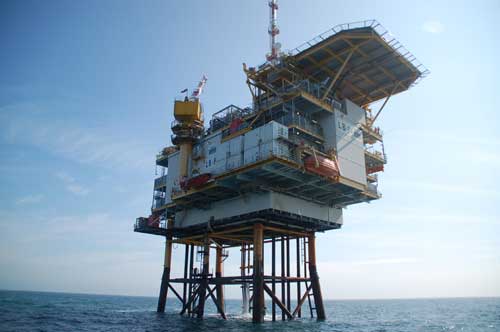 ESS Support Services Worldwide (ESS)
ESS Support Services Worldwide (ESS)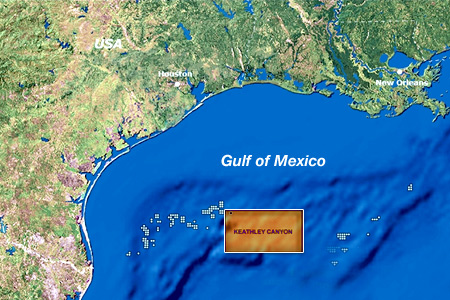 Under new ownership structure, BP, Chevron and ConocoPhillips will combine expertise and resources to unlock Tiber and Gila discoveries and pursue development of a new production hub in Keathley Canyon (see map)
Under new ownership structure, BP, Chevron and ConocoPhillips will combine expertise and resources to unlock Tiber and Gila discoveries and pursue development of a new production hub in Keathley Canyon (see map)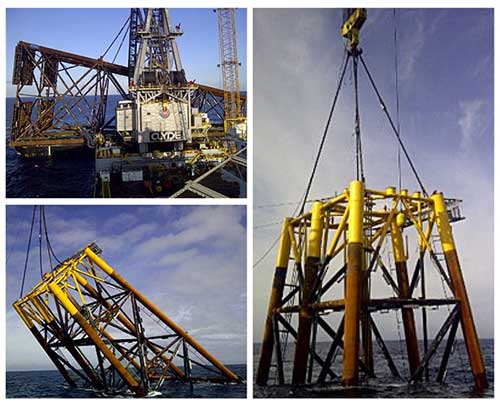 Photo: The McDermott heavy-lift vessel, Derrick Barge 50, installed a 3,250-ton jacket in the Gulf of Mexico.
Photo: The McDermott heavy-lift vessel, Derrick Barge 50, installed a 3,250-ton jacket in the Gulf of Mexico.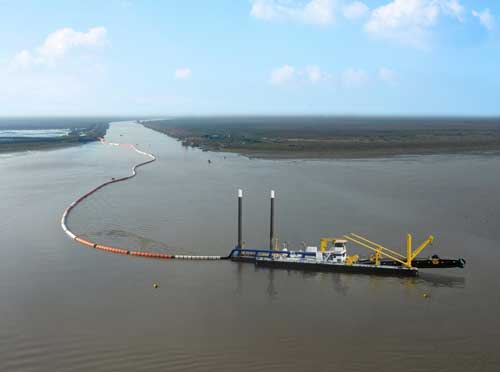 Damen
Damen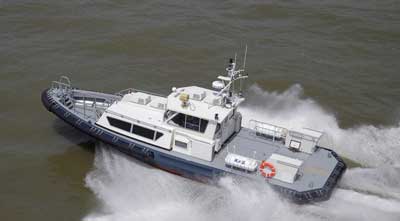 The fact that this particular CSD 650 was already equipped with anchor booms to allow easy moving of the side anchors was very helpful in minimising the time required for modifications, as the shallow waters in which it will be operating are not suitable for a Multi Cat to provide support.
The fact that this particular CSD 650 was already equipped with anchor booms to allow easy moving of the side anchors was very helpful in minimising the time required for modifications, as the shallow waters in which it will be operating are not suitable for a Multi Cat to provide support.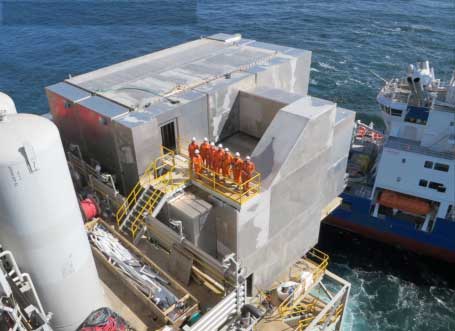 support services to the oil and gas industry, has completed the sale of the company's subarctic aluminum accommodations facility to a global energy company.
support services to the oil and gas industry, has completed the sale of the company's subarctic aluminum accommodations facility to a global energy company. Nearly two-thirds of voters in Florida support offshore drilling for domestic oil and natural gas resources, according to a new poll conducted by Harris Poll for
Nearly two-thirds of voters in Florida support offshore drilling for domestic oil and natural gas resources, according to a new poll conducted by Harris Poll for 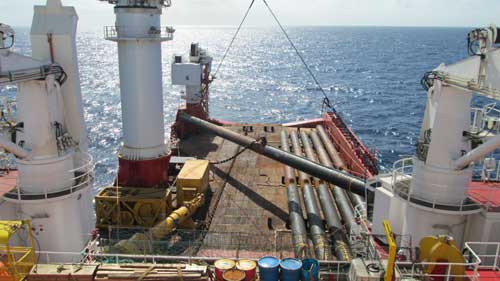 InterMoor
InterMoor The International
The International 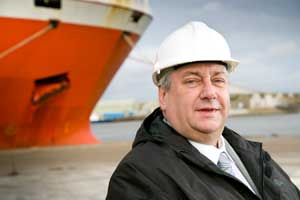 The Enhanced Standard is only available to candidates who have achieved at least an 80% pass mark on previous exams and demonstrate significant experience of undertaking well control training in their past. The content is primarily based on real industry well control incidents involving simulated exercise, team work and peer-to-peer review and feedback.
The Enhanced Standard is only available to candidates who have achieved at least an 80% pass mark on previous exams and demonstrate significant experience of undertaking well control training in their past. The content is primarily based on real industry well control incidents involving simulated exercise, team work and peer-to-peer review and feedback.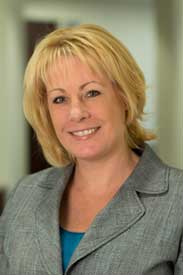 McDermott International, Inc.
McDermott International, Inc.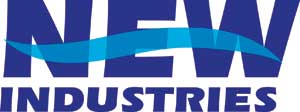 New Industries, Inc
New Industries, Inc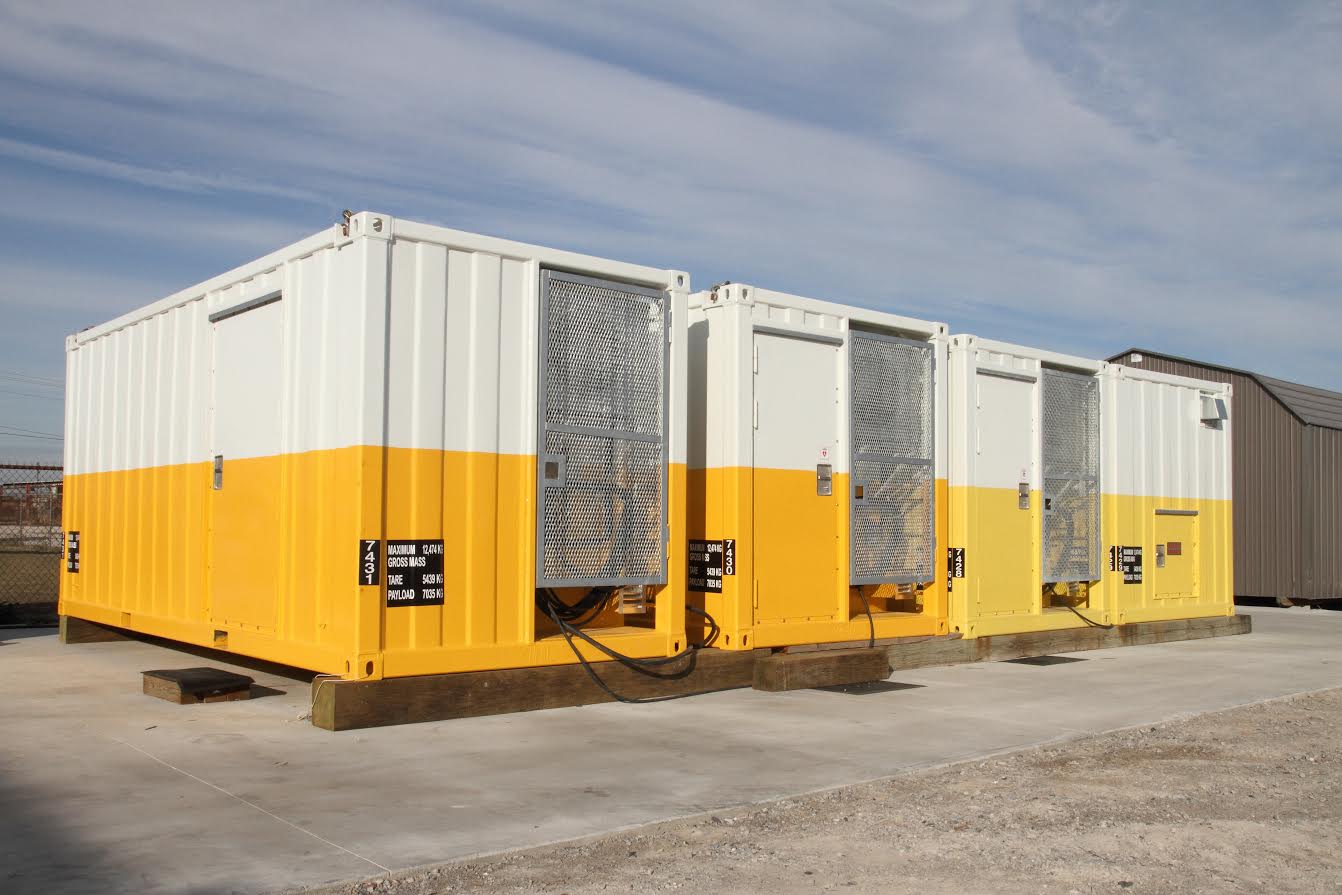 The mobilization-ready modules, commonly referred to as "vans" or "cabins," are manufactured at the New Industries facility in Morgan City, La. In addition to meeting DNV and ABS container safety standards, the modules are A60 fire rated and have been outfitted with a fire and general alarm system that complies with the latest U.S. Coast Guard standards. Due to the potential hazards posed by a laboratory environment, New Industries supplemented customary module construction with the inclusion of loss of oxygen sensors and the assurance of proper air changes for personnel in order to maximize safety.
The mobilization-ready modules, commonly referred to as "vans" or "cabins," are manufactured at the New Industries facility in Morgan City, La. In addition to meeting DNV and ABS container safety standards, the modules are A60 fire rated and have been outfitted with a fire and general alarm system that complies with the latest U.S. Coast Guard standards. Due to the potential hazards posed by a laboratory environment, New Industries supplemented customary module construction with the inclusion of loss of oxygen sensors and the assurance of proper air changes for personnel in order to maximize safety.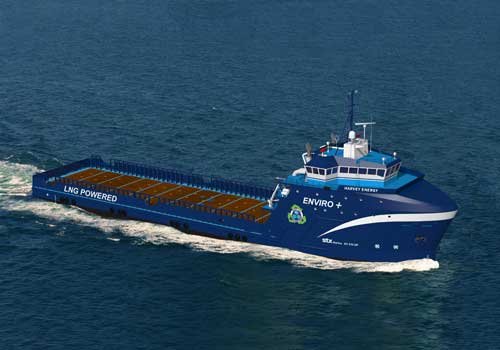 Harvey Gulf
Harvey Gulf NYC-based
NYC-based Regionally-tailored plan continues balanced approach to leasing, development; Draft proposal would protect sensitive resources—makes available nearly 80% of estimated undiscovered technically recoverable oil and gas resources on US Outer Continental Shelf
Regionally-tailored plan continues balanced approach to leasing, development; Draft proposal would protect sensitive resources—makes available nearly 80% of estimated undiscovered technically recoverable oil and gas resources on US Outer Continental Shelf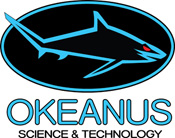 Okeanus Science and Technology, LLC (Okeanus)
Okeanus Science and Technology, LLC (Okeanus)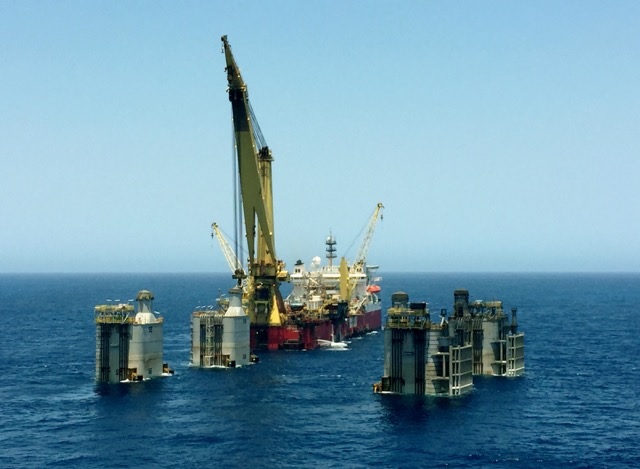 The Wheatstone LNG Project is being developed in Australia.
The Wheatstone LNG Project is being developed in Australia.